Welcome to Graz! In the heart of Austria, the charming city of Graz offers a unique experience for travelers in search of discovery and authenticity. With its rich historical heritage, cultural scene and panoramic views, Graz is an essential destination for exploring Austria.
What to see and do in Graz? In this travel guide, discover the best activities not to be missed and our tips for enjoying your stay without breaking the bank!
This travel guide is produced in commercial collaboration with the Austrian Tourist Office. The opinions and suggestions for activities in this article are therefore entirely sincere.
Preparing your stay in Graz
🗺️ How do I get there? Graz is easily accessible by train from other Austrian cities: allow 2 hours from Vienna, 3 hours from Linz.

🗓️ When to go? Choose the mid-seasons (spring or autumn) for mild temperatures that will make your visits more pleasant, or winter to enjoy the Christmas atmosphere. Please note: most museums are closed on Mondays.
⏱️ How long should you stay? At least two days to enjoy the city center, ideally three to take your time.
💬 How do you communicate? In Austria, the official language is German, but most Austrians speak perfect English.
Tips: visit Graz without breaking the bank
The Graz Card: the essential tool for visiting the city while saving money
The Graz Card is a great way to discover the city. It offers free use of all public transport, access to the funicular to the Schlossberg, free admission to many museums, a guided tour of the historic center and numerous discounts with partners.
Valid for 24, 48 or 72 hours, this card can be purchased online, at the tourist office or in certain hotels.
Free transport in the city center
In the hypercenter, public transport is free. Look out for the “ALSTADTBIM” label: stations with this label are free of charge, so you can enjoy the historic center without getting too tired!
Eating on a budget
In the city’s main squares, you’ll find numerous streetfood stalls (sandwiches, salads, Asian cuisine, hot dogs, burgers…) ideal for eating on the go at low prices.


Summary of Graz’s history
Graz is Austria’s second-largest city. Its name derives from the Slavic word “gradec”, meaning “small town”. In the 15th century, it was chosen as the residence of the Habsburgs, the powerful royal family of Austria, and played a key role as an administrative and military center. Numerous buildings from this period, such as the Schlossberg with its Clock Tower and the Styrian Arsenal, bear witness to the city’s importance. During the Renaissance and Baroque periods, Graz flourished culturally and economically, with the founding of the University of Graz in 1585, one of the oldest universities in Austria. The city also withstood Ottoman invasions, strengthening its defenses.
In 1619, when Emperor Ferdinand II took the throne, the court was transferred to Vienna and Graz lost its status as imperial residence, but the Italian craftsmen and artists who remained in Graz continued to develop the city’s bourgeois architecture, giving rise to numerous palaces.
At the beginning of the 19th century, Graz managed to repel Napoleon’s assault, but in 1809, at the Treaty of Vienna, Napoleon demanded that Graz’s fortress (Schlossberg) be dismantled and transformed into a park, which is now one of the city’s green lungs.
In more recent history, Graz’s highly industrialized right bank was the target of bombing raids during the Second World War, while the historic center was relatively unscathed. The city’s status as European Capital of Culture in 2003 has enabled Graz to modernize, and it is now a young, dynamic city with a population of 300,000, including 70,000 students.
What should you see in Graz? Top 10 places to visit
The historic center
Graz’s city center offers a wealth of fascinating and historic sites. All the sights listed below are easily accessible on foot, so take your time to stroll around and enjoy the city’s architecture!
Book a visit to Graz
To find out more about Graz and its history, book a guided tour of the city at https://www.grazguides.at/en/.
La Hauptplatz et la Herrengasse
Hauptplatz is the city’s main square, where Graz really comes alive! It’s a lively place, the scene of numerous festivals. You’ll also find many streedfood stalls at very affordable prices.
Right next door, Herrengasse is Graz’s main thoroughfare, a busy shopping street.

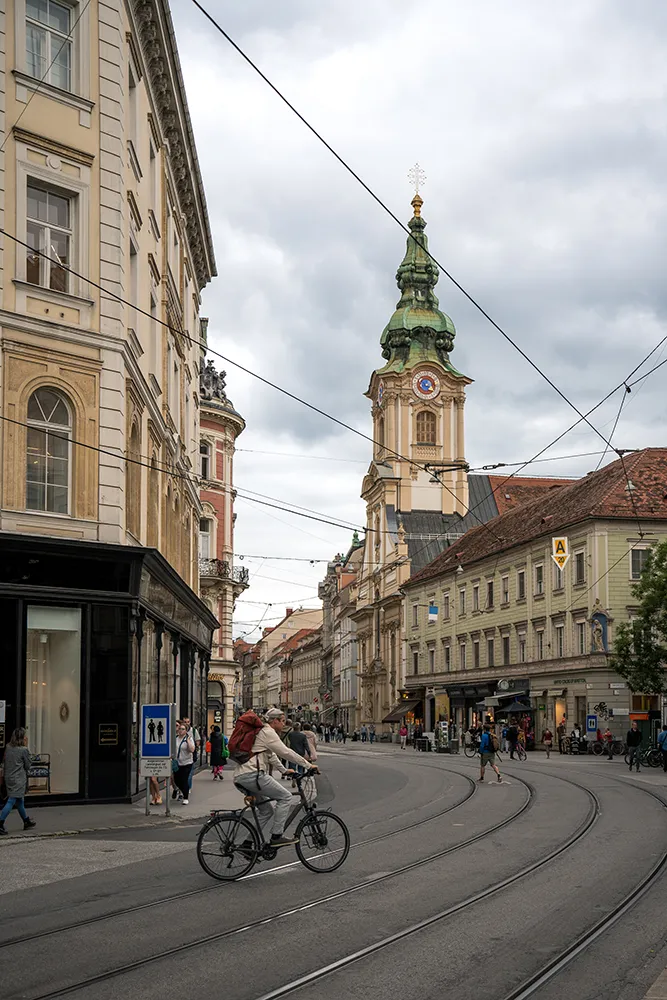

L’armurerie(Armory)
For several centuries, Styria was in conflict with the Ottoman Empire. In the 1640s, an armory was built to store large quantities of weapons and armor. Graz had no professional army, so in the event of an attack, residents would go to the armory to equip themselves.
32,000 objects are on display in the armory, spread over four floors, but you’ll see very few artillery pieces, as in the 19th century most of them were sold off to rebuild the theater, underlining the importance of arts and culture in the city!
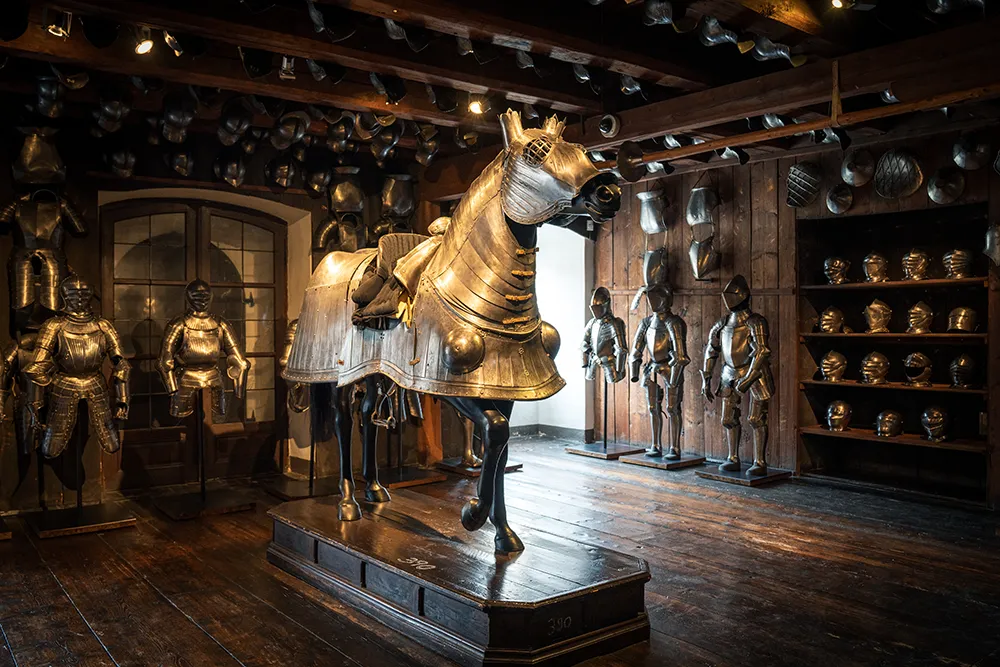

Herrengasse 16
Tuesday to Sunday, 10 am to 6 pm
Adults: €12, €5.5 for 19-26 year-olds, free for under-19s
Free admission with Graz Card
The Cathedral
From the outside, this cathedral may not look like much, but you’d be wrong not to go inside! The interior is sumptuous and richly decorated, and well worth a visit.
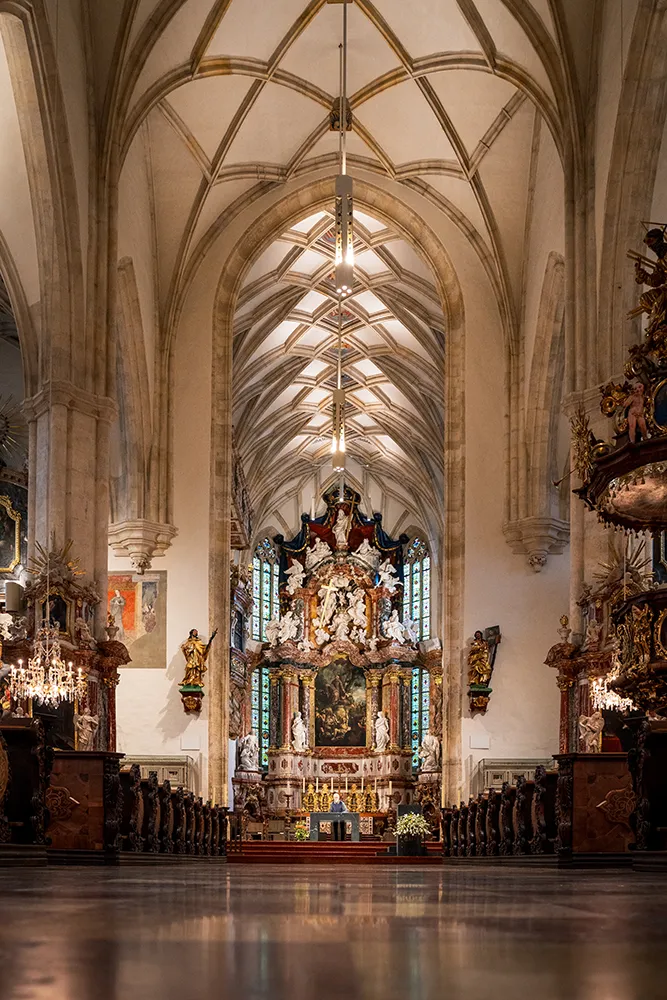
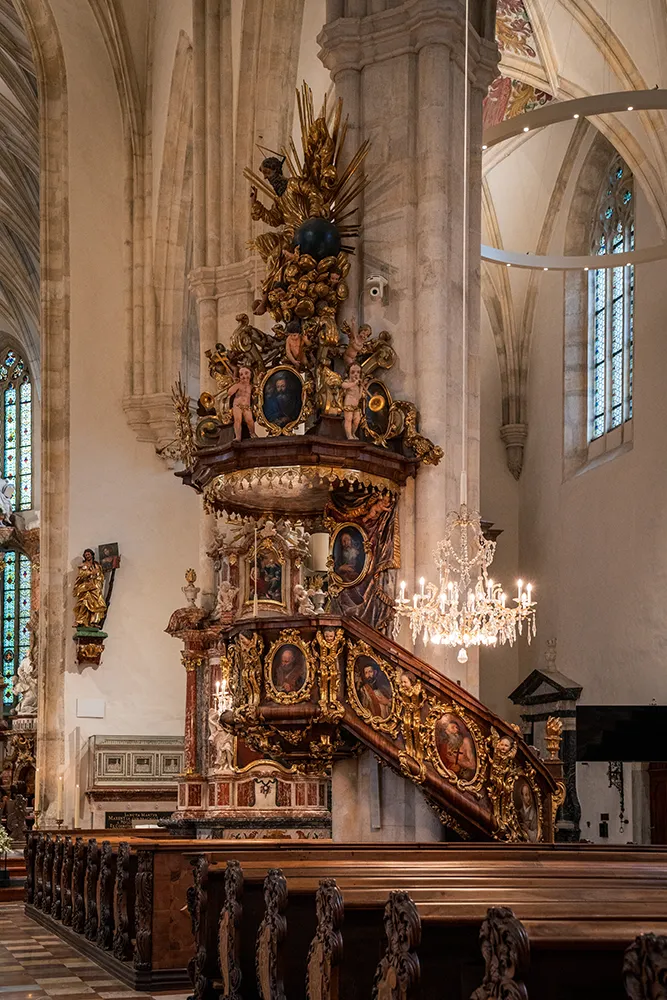
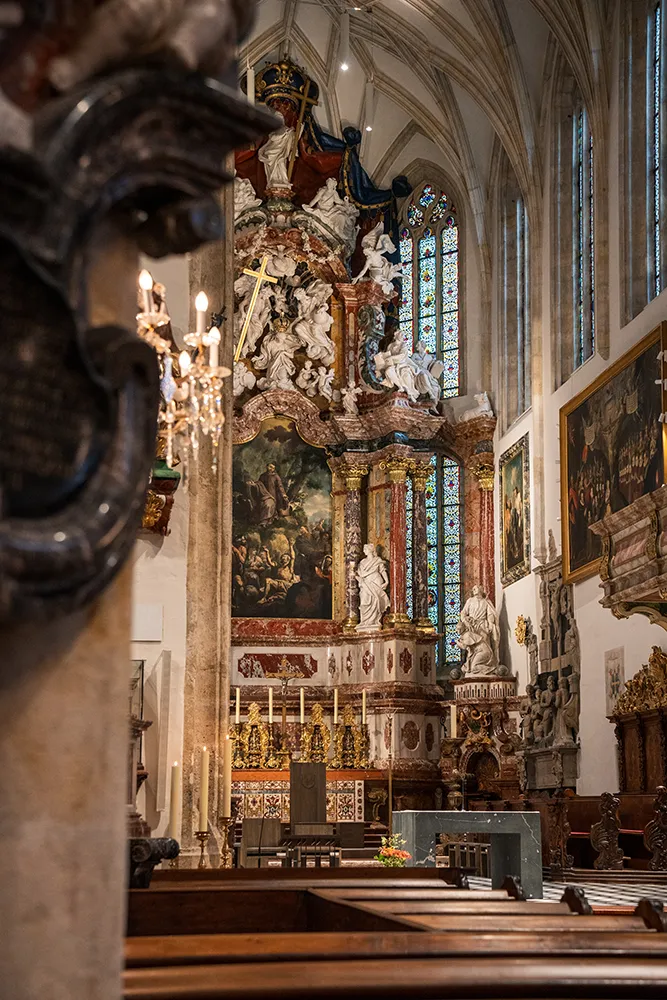
Burggasse 3
Free entrance
Mausoleum of Emperor Ferdinand II
Located right next to the cathedral, this mausoleum was built from 1614 onwards at the request of Ferdinand II himself, when he was not yet emperor. It was built by the Italian architect Giovanni Pietro de Pomis.


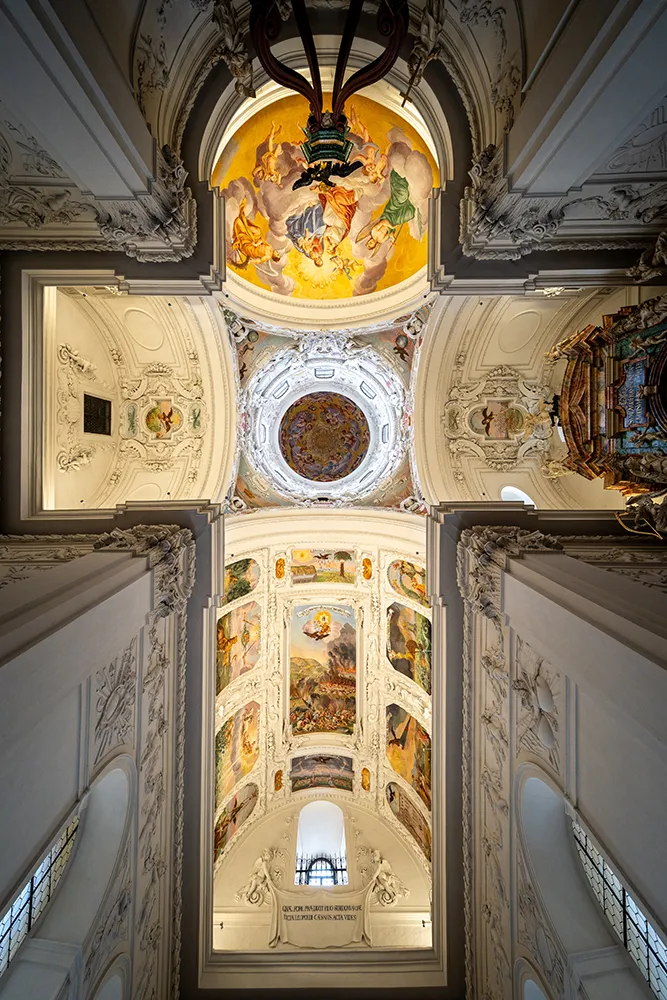
Burggasse 3
April to December, Tuesday to Sunday, 9am to 5pm
Free admission
The double spiral staircase
Just a short distance away, you’ll find Graz Castle, home to an astonishing spiral staircase. It’s not quite a double-revolution staircase like the one at Chambord: here, the two spirals intersect on each floor. It’s very surprising, and there are only 5 staircases of this type in the world.
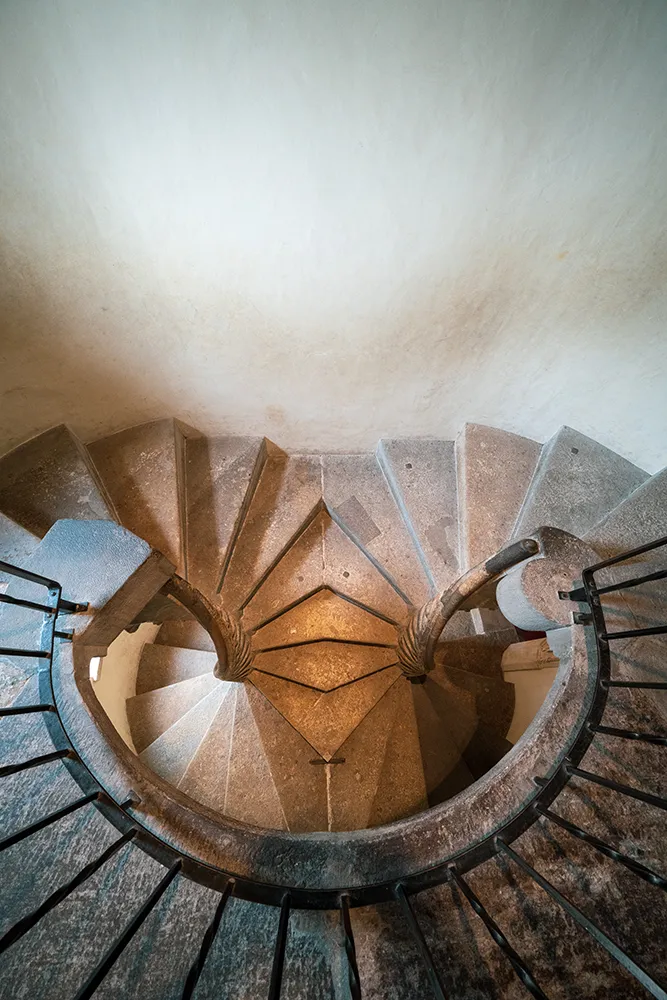
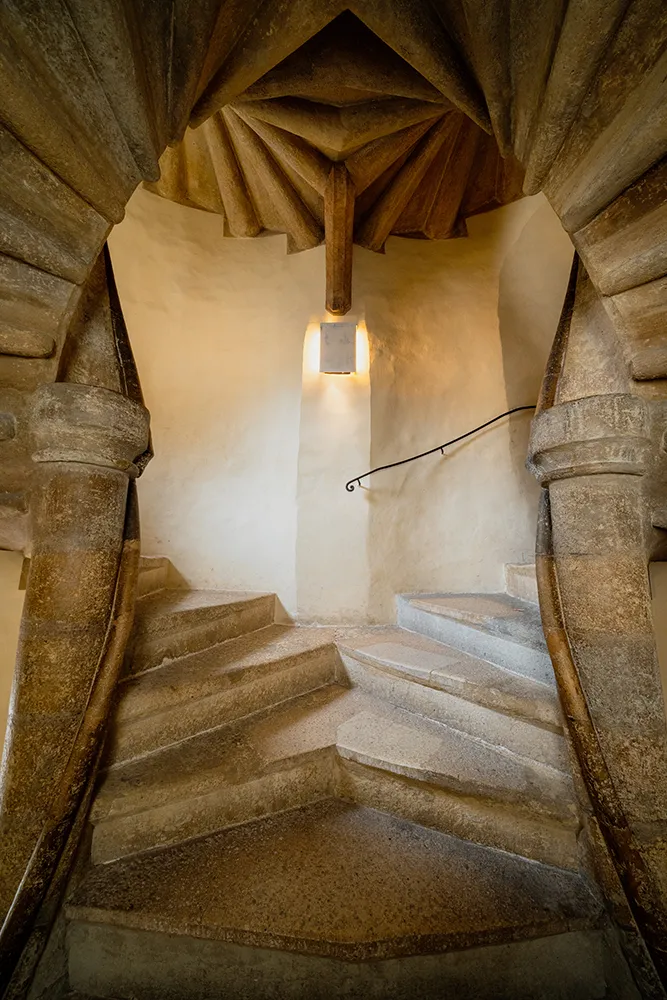
Free admission
The Landhaus courtyard
In Graz, if you see an open door, don’t hesitate to go in and see what’s behind it – you may be in for a pleasant surprise, as a multitude of small courtyards are open to the public.
Not to be missed is the courtyard of the Landhaus, the Styrian regional parliament. Its Renaissance style is the work of Italian architect Domenico dell’ Allio.

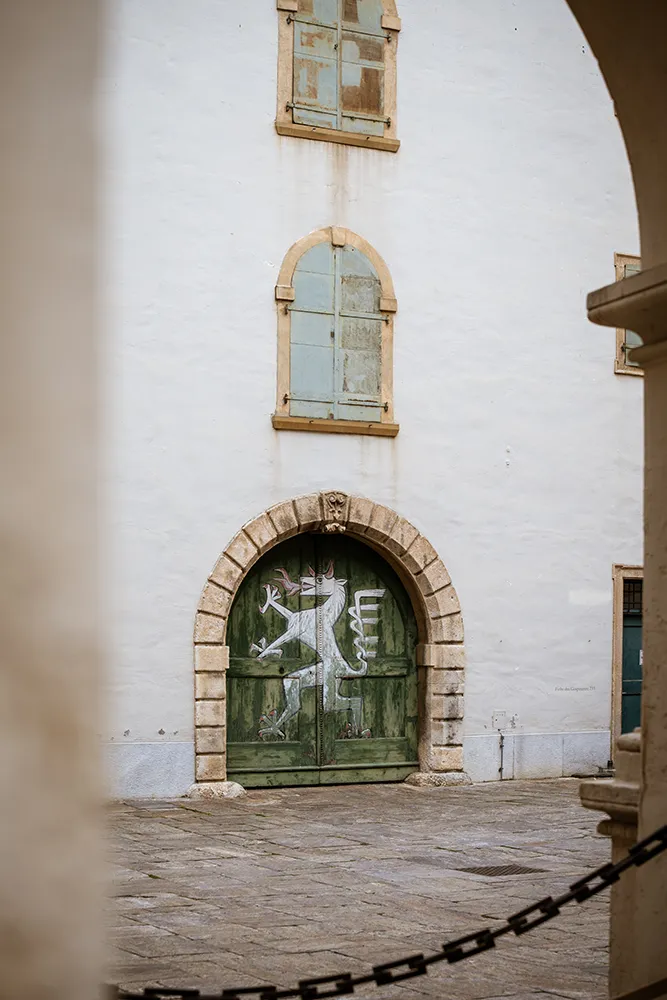
Herrengasse 16
Free entrance
The right bank of Graz
The right bank of Graz has long been a neglected area. Once home to industrial plants, it was largely destroyed during the Second World War, and the area was long neglected by local residents.
In the 2000s, and particularly in 2003 when Graz was named European Capital of Culture, several urban planning projects helped revitalize this district, which is now Graz’s “trendy” area.
The museum of contemporary art
But what is this strange building with its unusual architecture? In Graz, it’s known as the “friendly alien”! It’s the Kunsthaus, a contemporary art center featuring a brasserie, a store and, of course, art exhibitions.
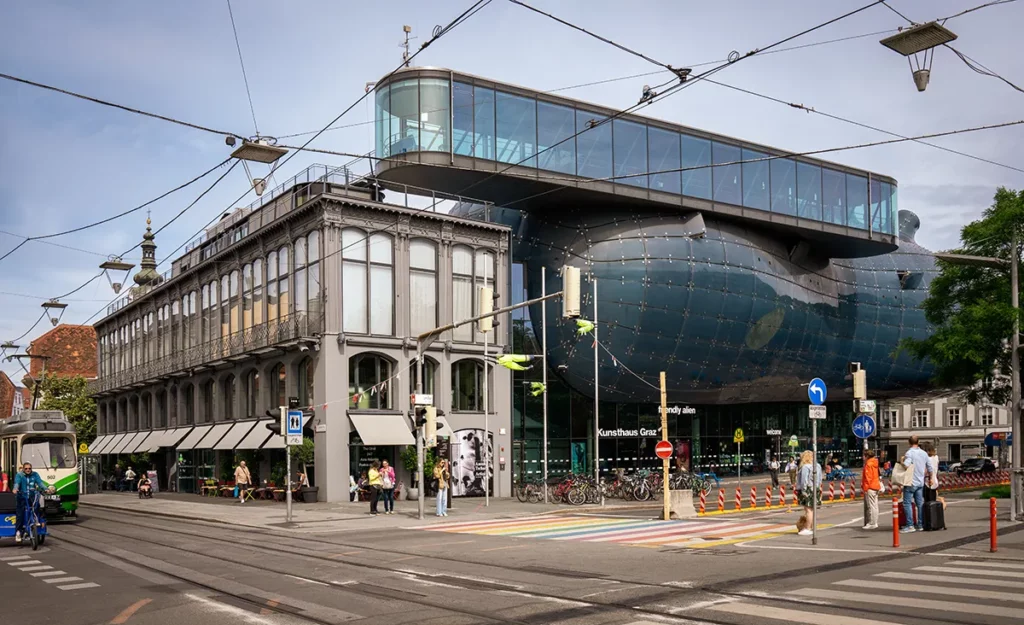
Lendkai
Tuesday to Sunday, 10 am to 6 pm
Adults €12, €5.5 for 19-26 year-olds, free for under-19s
Free admission with Graz Card
The floating island
A symbol of Graz’s modernity, this strange shell on the Mur connects the city’s two shores via footbridges. Inside, you’ll find an amphitheatre, a café and a store.
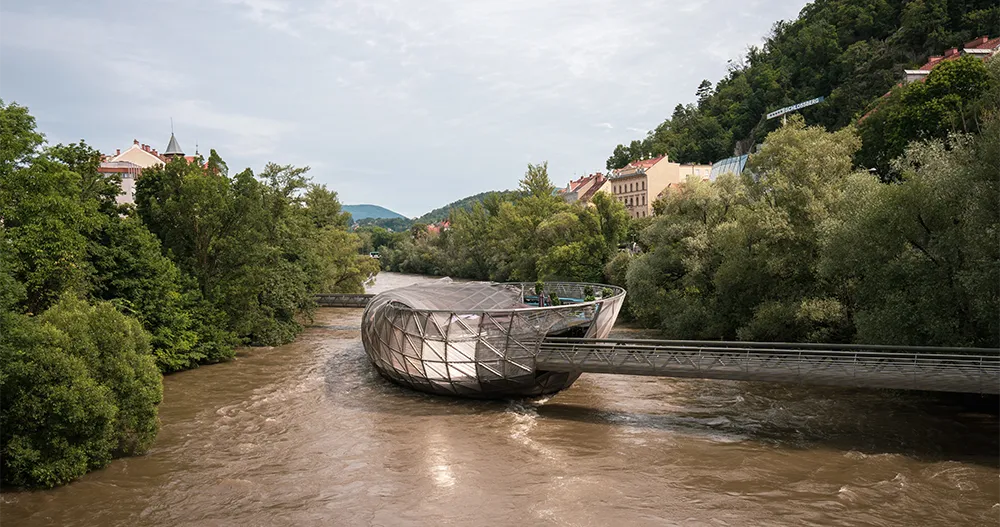
Lendkai 19
Daily, 10am to 8pm
Sustainable stores and cafés
In this young and trendy district, you’ll find numerous boutiques selling second-hand items or items created from recycled materials, as well as several cafés and restaurants where you can recharge your batteries and relax between two visits!
In many parts of the city, you’ll also find markets selling local produce. In fact, since 2008, the city has been known as the “capital of culinary delights”.

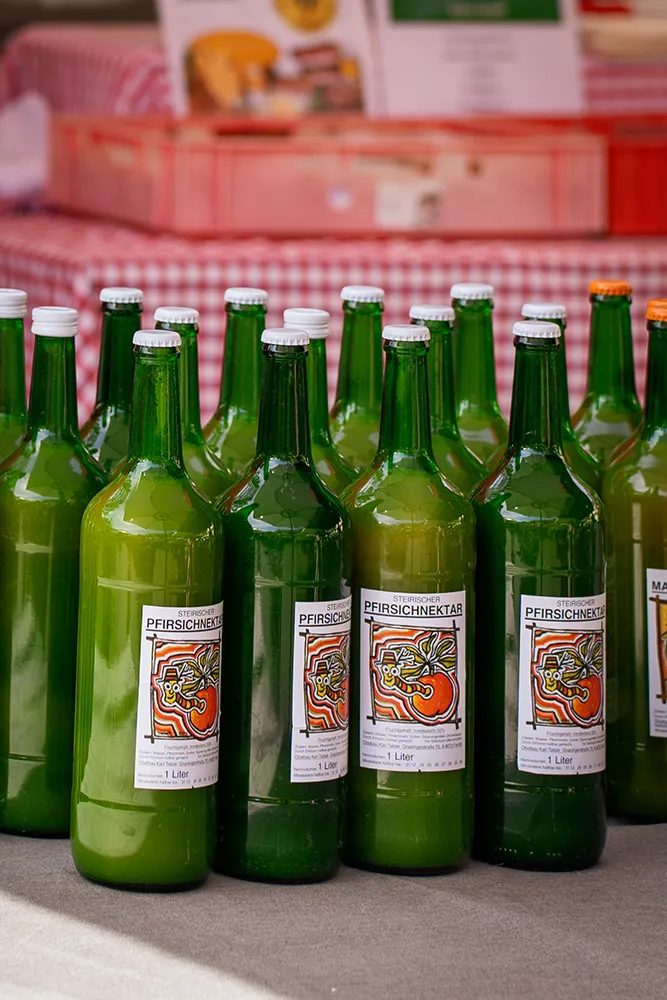
Schlossberg hill and Clock Tower
It’s impossible to miss Graz’s landmark clock tower. The tower has been in existence since 1560 and has been telling the time since 1712!
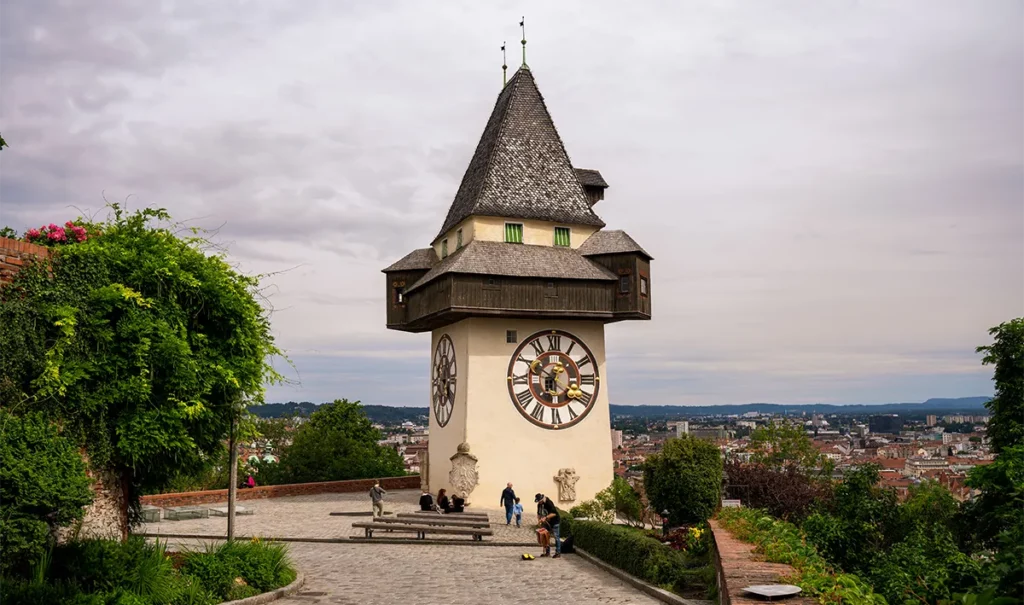
If you’d like to see it at close quarters, and enjoy a beautiful view of the city at the same time, head for the Schlossberg hill.
To access it, you have several options:
- The stairs (266 steps)
- Elevator (fee: €2)
- Cable car (chargeable, but free with Graz Card )
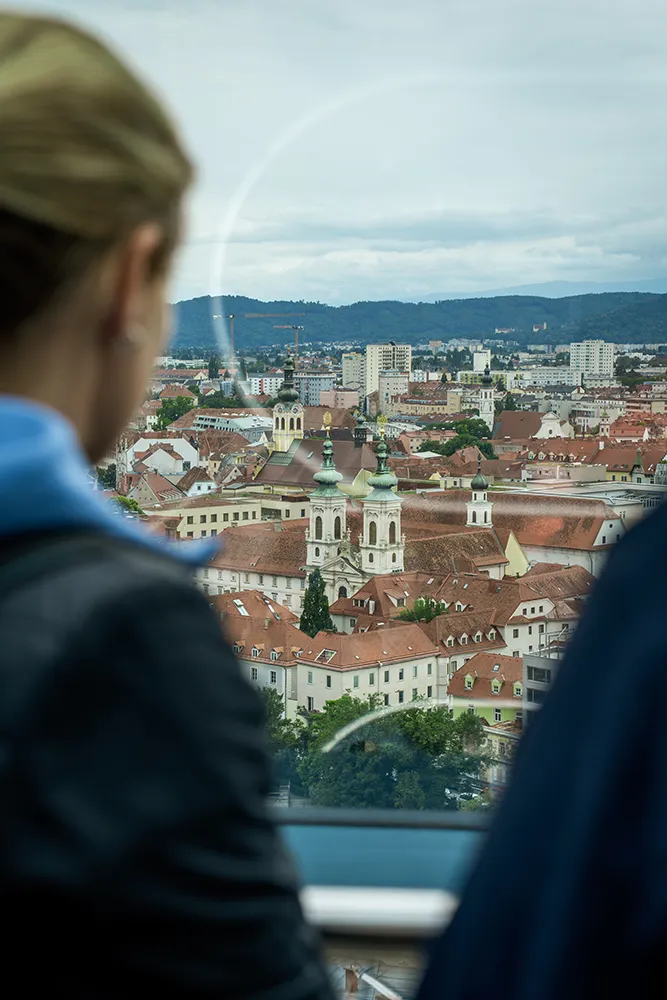
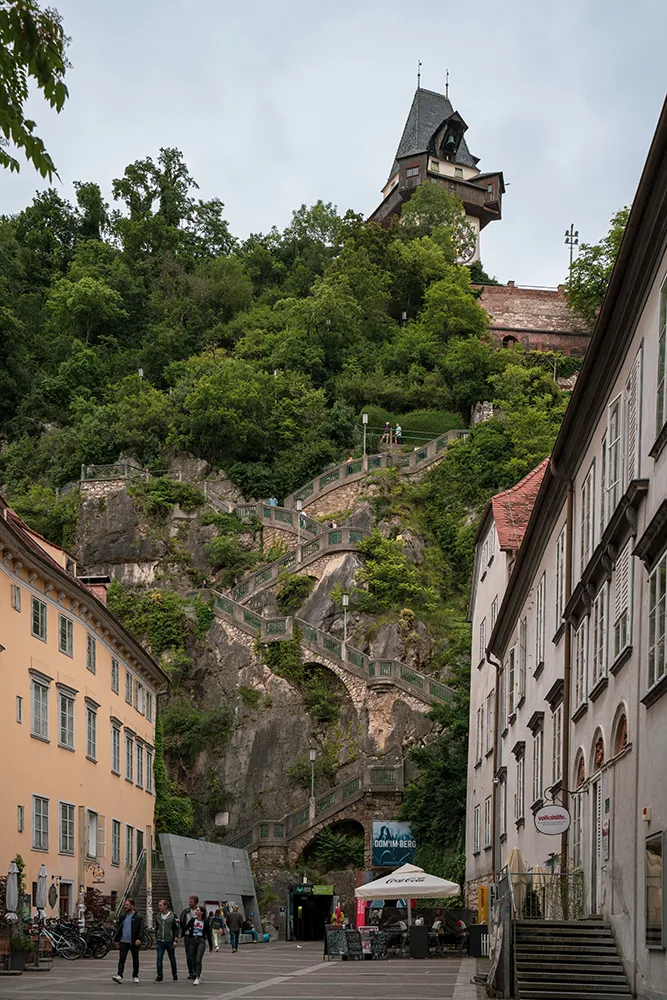
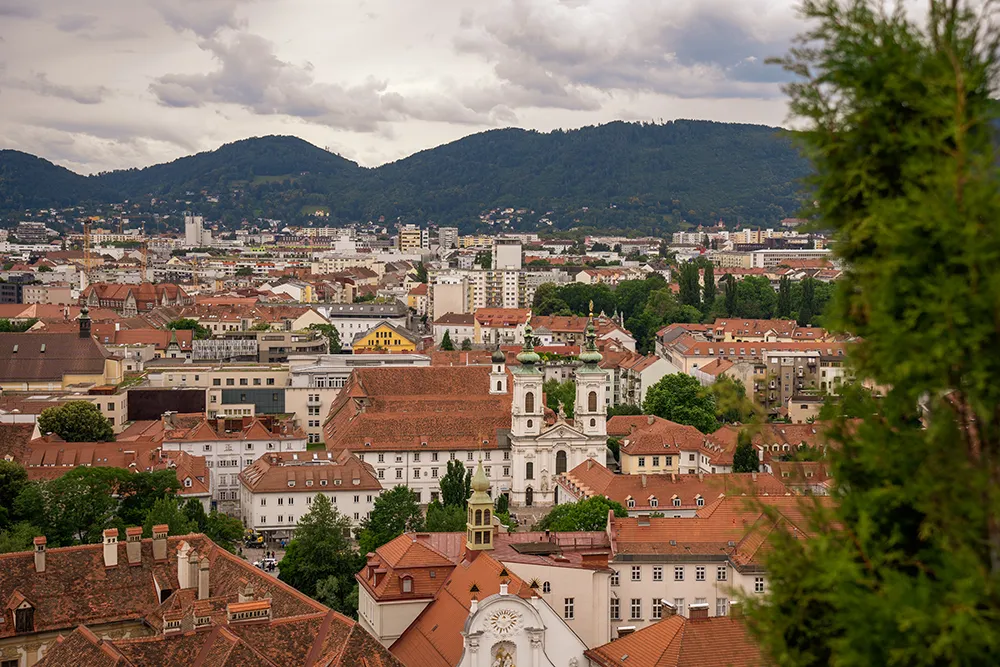
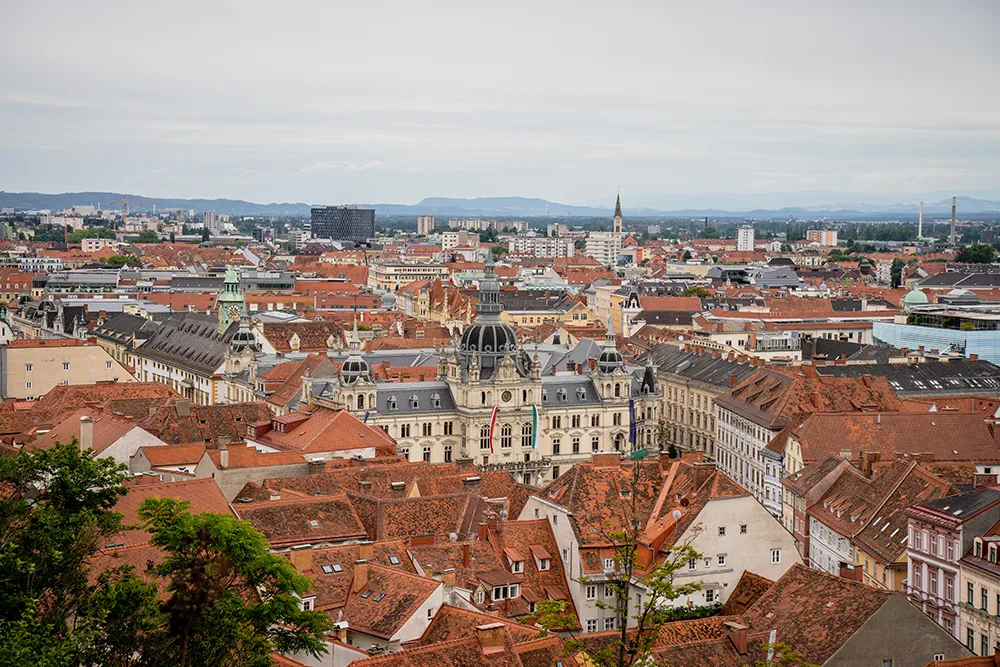
Eggenberg Castle (Schloss Eggenberg)
Don’t miss this castle! It may be a little out of the way, but it’s easily accessible by streetcar, just 20 minutes from the city center.
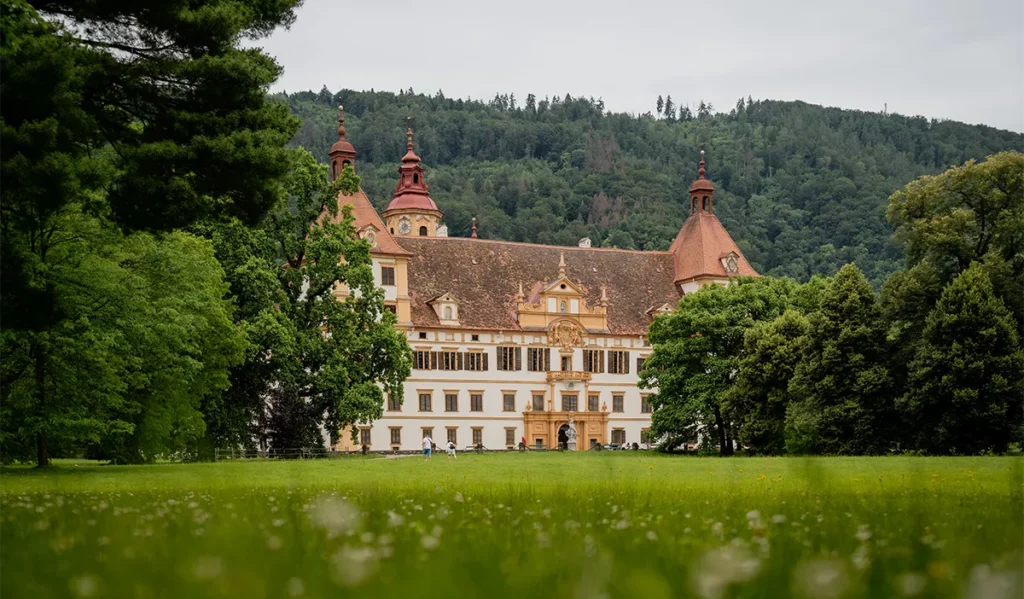
Also designed by architect Giovanni Pietro de Pomis, between 1625 and 1656, it is the largest castle in Styria. Its construction is closely linked to the measurement of time:
- 365 windows like 365 days of the year
- 31 rooms on each floor like the days of the month
- The ceremonial rooms have 52 doors, as do the weeks of the year.
- 4 corner towers evoke the seasons


Inside the castle, you’ll find several museums and, above all, impressive ceremonial rooms that can only be visited on guided tours. Unfortunately, photography is forbidden, so I can’t show you a glimpse.
Take time to stroll through the gardens, where you’re sure to come across a few peacocks.
Eggenberger Allee 90
Streetcar line 1 direction Eggenberg, get off at Schloss Eggenberg stop
Open April to October, Tuesday to Sunday, 10 a.m. to 6 p.m.
Admission with guided tour: €18 per adult, €8 for 19-26 year-olds, free for under-18s
Gardens only: €2 per adult, €1 for 19-26 year-olds, free for under-19s
Free admission with Graz Card
Where to stay in Graz?
Graz is a city on a human scale, where you can get around easily on foot or by streetcar, so there’s no neighborhood to favor more than another. Enter the dates of your stay in the search module below to see the available establishments and their rates:
If you’re looking for simplicity, I recommend staying close to Jakominiplaz station, which is the city’s hypercentre, where all the streetcar lines intersect. During my stay, I put down my suitcases at theHotel Gollner. The rooms have a small kitchen with fridge and microwave, handy if you want to make a few savings on meals.

Interactive map of Graz
All the addresses mentioned in this article can be found on this map:
Extend your stay in Austria
Want to discover a little more of Austria? Take a trip to Linz, the country’s third-largest city, just 3 hours by train from Graz.

Don’t miss the capital city of Vienna, with its palaces and numerous museums, just 2 hours away by train.
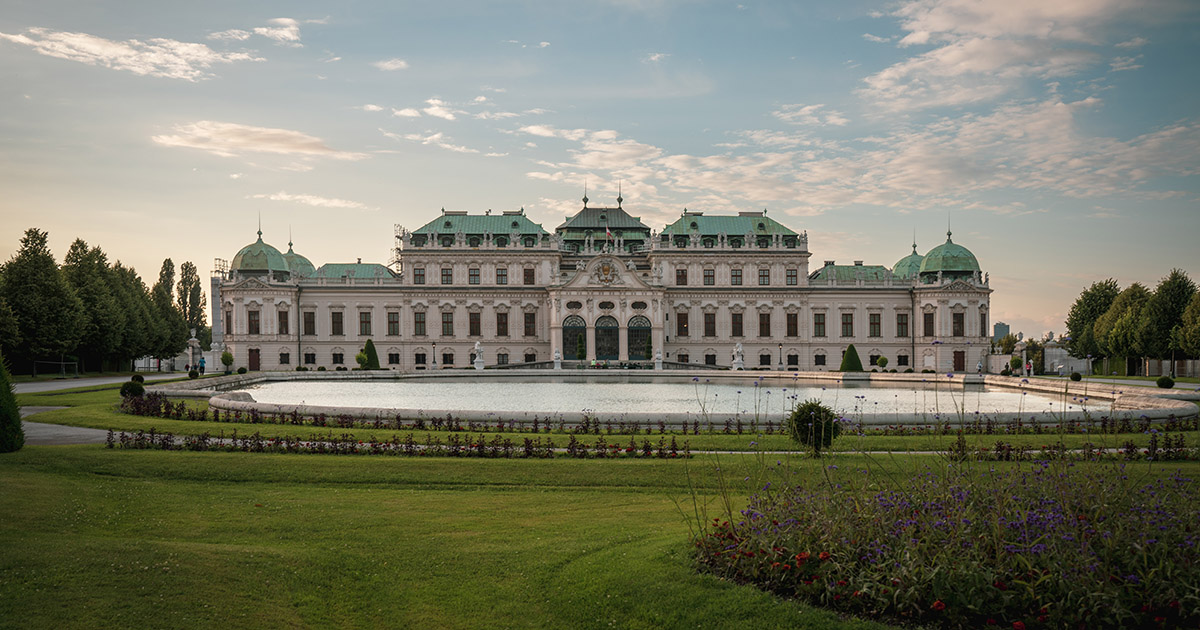
This travel guide is produced in commercial collaboration with the Austrian Tourist Office. The opinions and suggestions for activities in this article are therefore entirely sincere.
This article contains affiliate links, i.e. I receive a commission if you make a purchase after clicking on a link. It doesn’t cost you anything extra, but it helps me develop Culturez-vous and bring you new stories.
All photographs used in this article are the property of Culturez-vous and may not be used without written permission.

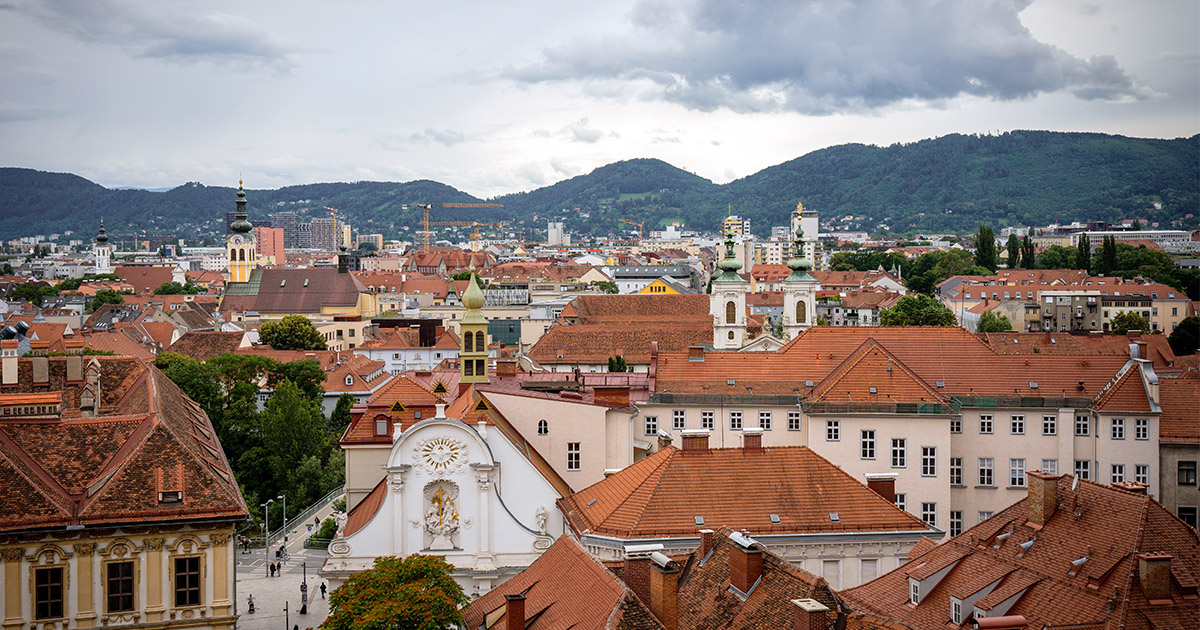



No Comments
Leave a comment Cancel